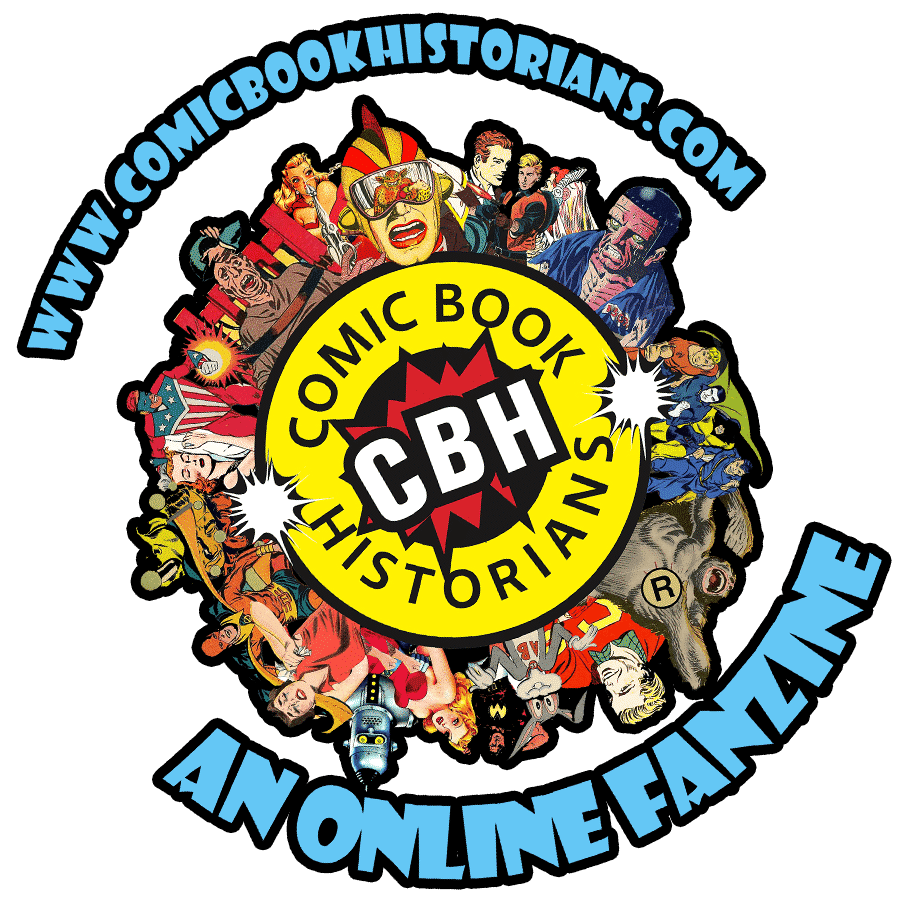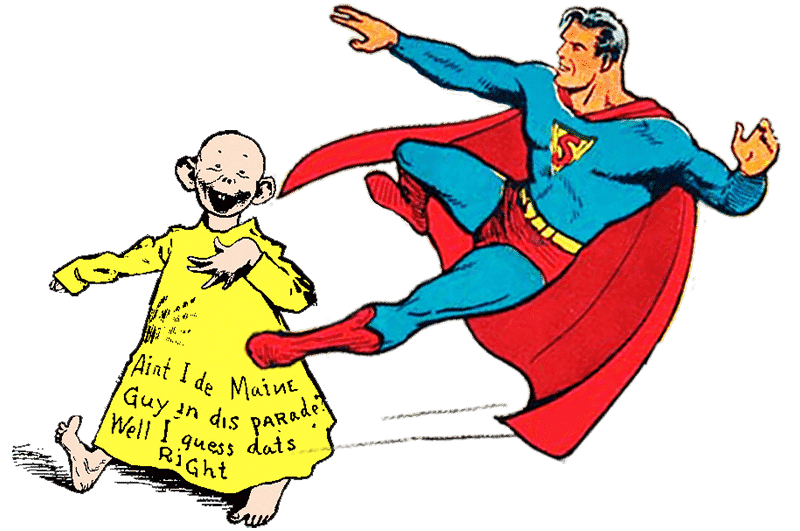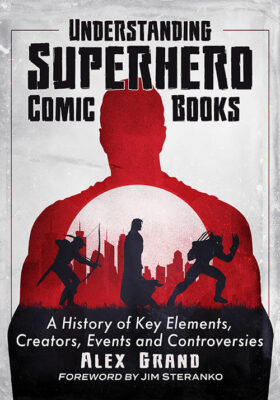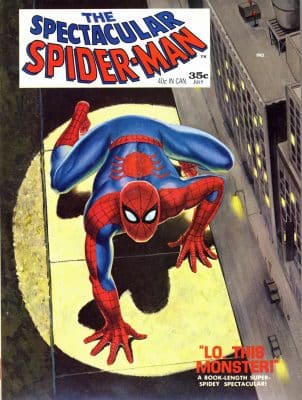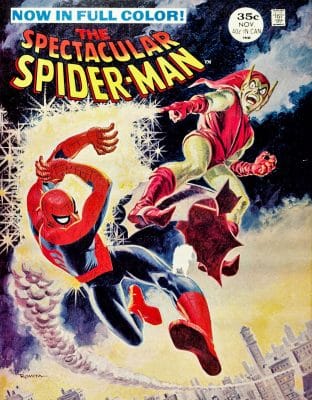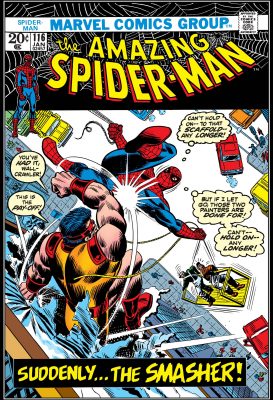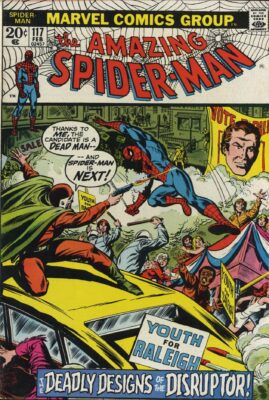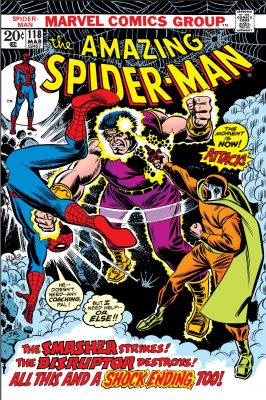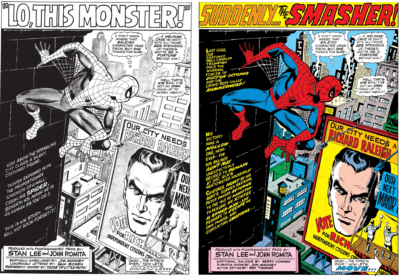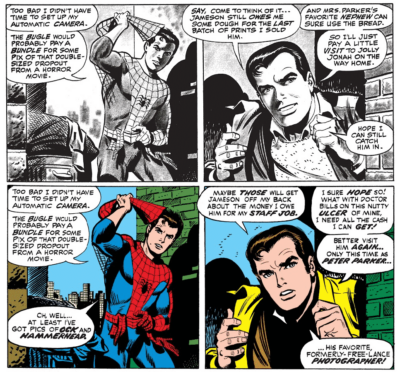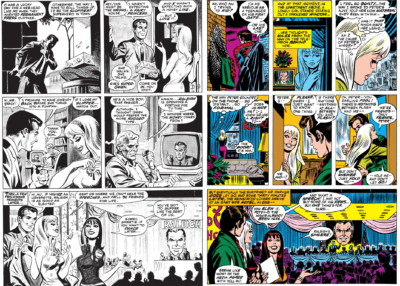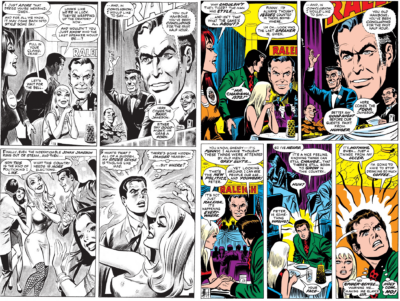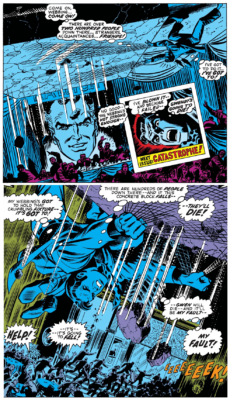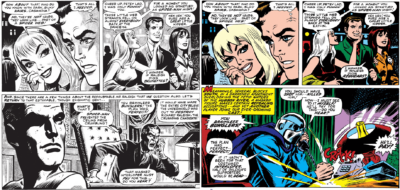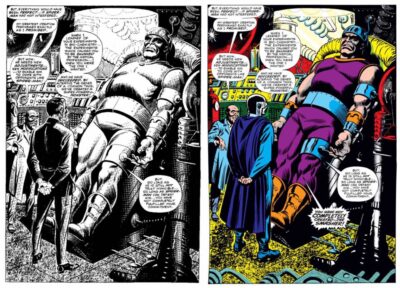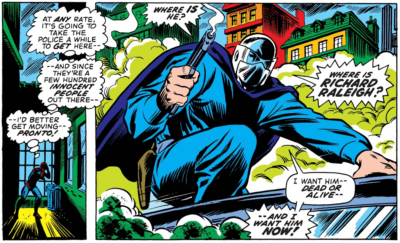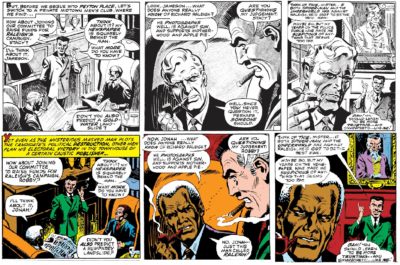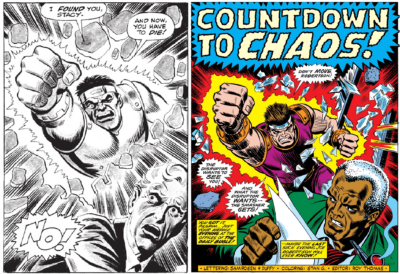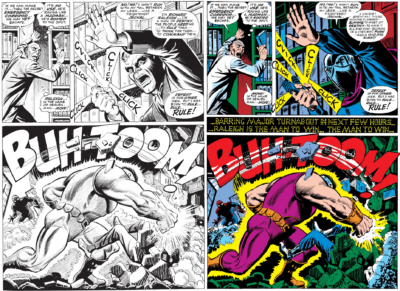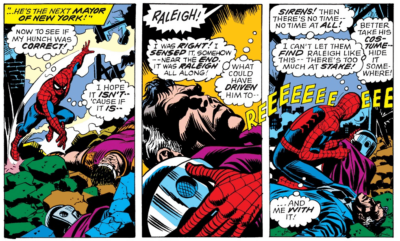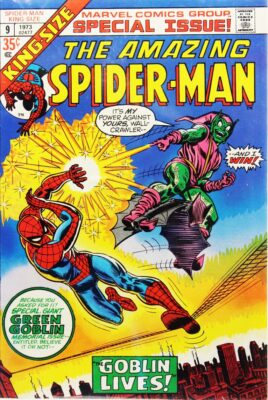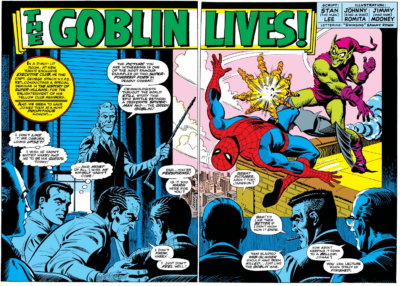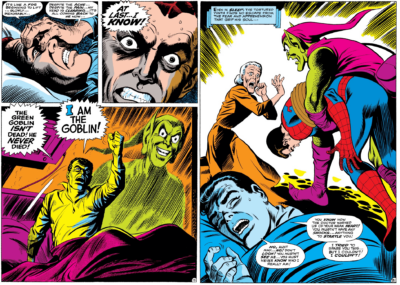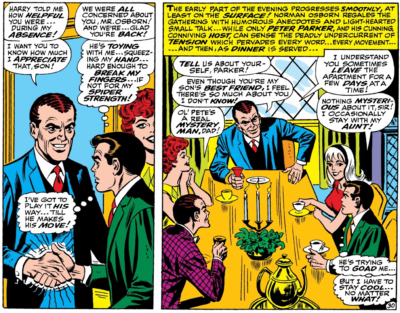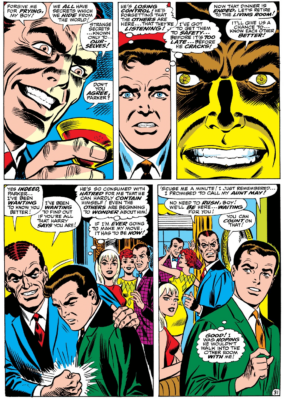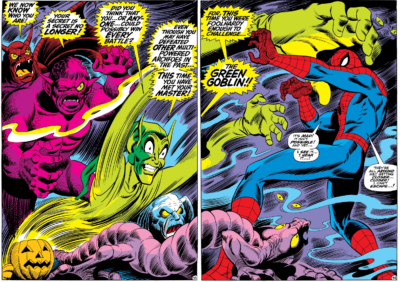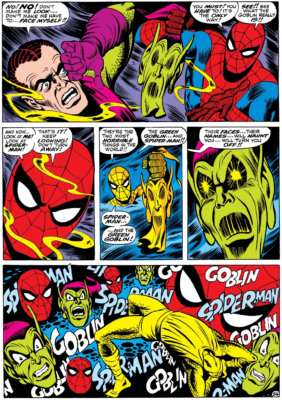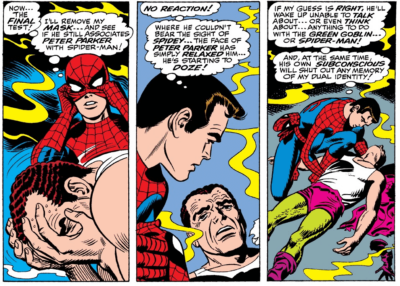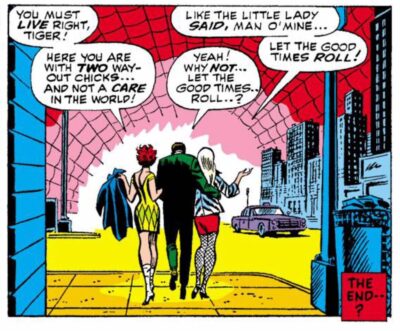Two Spectacular Spider-Man Magazines from 1968 by Alex Grand
Read Alex Grand’s Understanding Superhero Comic Books published by McFarland Books in 2023 with Foreword by Jim Steranko with editorial reviews by comic book professionals, Jim Shooter, Tom Palmer, Tom DeFalco, Danny Fingeroth, Alex Segura, Carl Potts, Guy Dorian Sr. and more.
In the meantime enjoy the show:
Does anyone remember Spectacular Spider-Man? Not the comic that started in 1976, but rather the black and white magazine that lasted 2 issues in 1968. Both were put together with the art and writing team of John Romita Sr and Stan Lee with inks by craftsman, Jim Mooney. This was an attempt to see if the magazine market would bare a black and white, mildly adult Spidey Magazine since Jim’s Warren’s magazines did so well. However this series published by Marvel before they had Perfect Film/Chemical’s magazine distribution arm, Curtis circulation didn’t sell great. Both covers had art by John Romita Sr and the first one’s cover was painted by men’s cover painter, Harry Rosenbaum, and Romita Sr painted the second cover.
These are both 60ish page giants. and the first issue was reprinted in Amazing Spidey 116-118, 1973 with alterations by Gerry Conway & T. Mortellaro. Let’s discuss interesting points of the two magazines.
Although much of the plot, layouts penciling and inking are the same, there are some notable differences likely playing off of the different demographics of the two books. On the title page we see different dialogue to the left on the wall and we see Spider-Man’s eye plates are gone in the comic continuing off the previous issue’s story.
Peter Parker also looks different as in the black and white magazine, he still had his clean cut 1968 Romita whereas in 1973, he looked slightly more rugged.
In the black and white magazine, clean cut Peter Parker picks up a smiling Gwen Stacy from her father, Captain Stacy’s house and in the 1973 color comic, a rugged Peter Parker picks up a depressed Gwen Stacy from her house without her father who died a few years before.
When Peter and Gwen get to their political convention, a happy Gwen starts dancing away in the original version, whereas in the later color comic, they somberly sit down.
At the convention, Peter has to web the ceiling to prevent it from falling onto the crowd which he does quickly, however in the later comic reprint, there is a climactic in between ending of issue 116 and beginning of issue 117 to add some tension for the reader.
In the black and white magazine, the convention nominee, Raleigh is seen to be the evil one making all the plans, but in the color reprint, he’s dressed like a color coded Darth Vader type to disguise his identity and make it out to be a super villain stunt for kids.
We know that he is making plans, but we don’t know who he is, and its likely more fun for kids reading the color comic compared to the more adult black and white magazine readers.
In fact, there is a whole scene in the 1973 color comic where the costumed villain, called The Disruptor is on a car making a scene and pretending he isn’t the crooked politician that he actually was.
Later in a local men’s country club, Jameson is sitting with two friends and we see that comparing the two from the 1968 mag and the 1973 color comic that his pals are two completely different people. Captain Stacy is replaced by Robbie Robertson and some aristocrat is replaced by Norman Osborn. Notice the Goldwater landslide joke in 1968 refers to the 1964 presidential election between LBJ and Barry Goldwater whose name is replaced with Hubert Humphrey who lost to Nixon in 1972.
An interesting notation here is that the 1968 scene looks a bit more conservative than the 1973 scene. Captain Stacy first appeared in 1968 and this black and white magazine makes one think that he was originally meant to be a more major part of the story’s cast, before he was killed off in 1970. Robbie Robertson was created by Stan Lee and John Romita Sr in 1967, so he was around in 1968, but he came more to the forefront of the storytelling by 1973. These circumstances explain why hroughout the story and during the conclusion, Captain Stacy is replaced by Robbie Robertson.
The crooked politician meets his end in the same means in both versions, but he is still costumed as the Disruptor in the 1973 comic.
This leaves it up for an additional scene where Spider-Man uncovers his identity.
The Spectacular Spider-Man Magazine 2, 1968 continues Peter Parker’s antagonism with Norman Osborn, the Green Goblin, and this issue was also reprinted in Amazing Spider-Man Annual 9, 1973.
This colored comic magazine shows that Captain Stacy is still a very important part of the story, which means he probably meant a lot to Stan Lee.
Norman Osborn comes more to the forefront in this issue as he starts to remember that he is the Green Goblin after his amnesia lifts during an intense dream sequence. At the same time, Peter is having dreams about Norman Osborn terrorizing his family, so maybe they’re soul mates!
What’s Norman Osborn’s first move? Terrorize his family and friends! Here we see him ominously shaking hands with Peter in a terrifying and awkward dinner scene.
There is a predatory game of cat and mouse that Norman plays with Peter and you can feel Peter feeling tortured the entire time. Norman just loves to be mischievous taunting everyone at this dinner. What a dirtbag!
This dysfunctional family and friend scene all feels eerily similar to the 2002 Sam Raimi Spider-Man film.
https://www.youtube.com/watch?v=GaULrRqoqBE
However one strong difference from the 2002 film is that since the magazine is in 1968, there had to be hallucinogenic pumpkin bombs.
After all it was the end of the 1960s and LSD would be going into hyperdrive in the teenage subculture at this point. Spider-Man turns the hallucinations back onto Norman Osborn.
After Parker ends up using mental and psychiatric terror techniques to defeat Norman, the villain’s amnesia is reinstated as an early example of the illusion of change where there is very little difference whether this story exists in the overall long arc of the character.
But don’t worry, at least it ends with Parker getting to enjoy both “way-out chicks” Mary Jane and Gwen Stacy with not a care in the world, ready for the good times to roll.
Although these two magazines didn’t sell well, Stan would go back to the black and white magazine market once Perfect Film and Chemical finished its ownership of Marvel, and he was able to use their Curtis Circulation Magazine distribution arm to rain the stands with more adult Magazines, which proliferated through to the early 1980s. For more info on that, check out our interview with Rick Marschall who edited that line of magazines in the late 1970s.
cheers.
Spider-Man ©Marvel
Join us for more discussion at our Facebook group
check out our CBH documentary videos on our CBH Youtube Channel
get some historic comic book shirts, pillows, etc at CBH Merchandise
check out our CBH Podcast available on Apple Podcasts, Google PlayerFM and Stitcher.
Use of images are not intended to infringe on copyright, but merely used for academic purpose.
